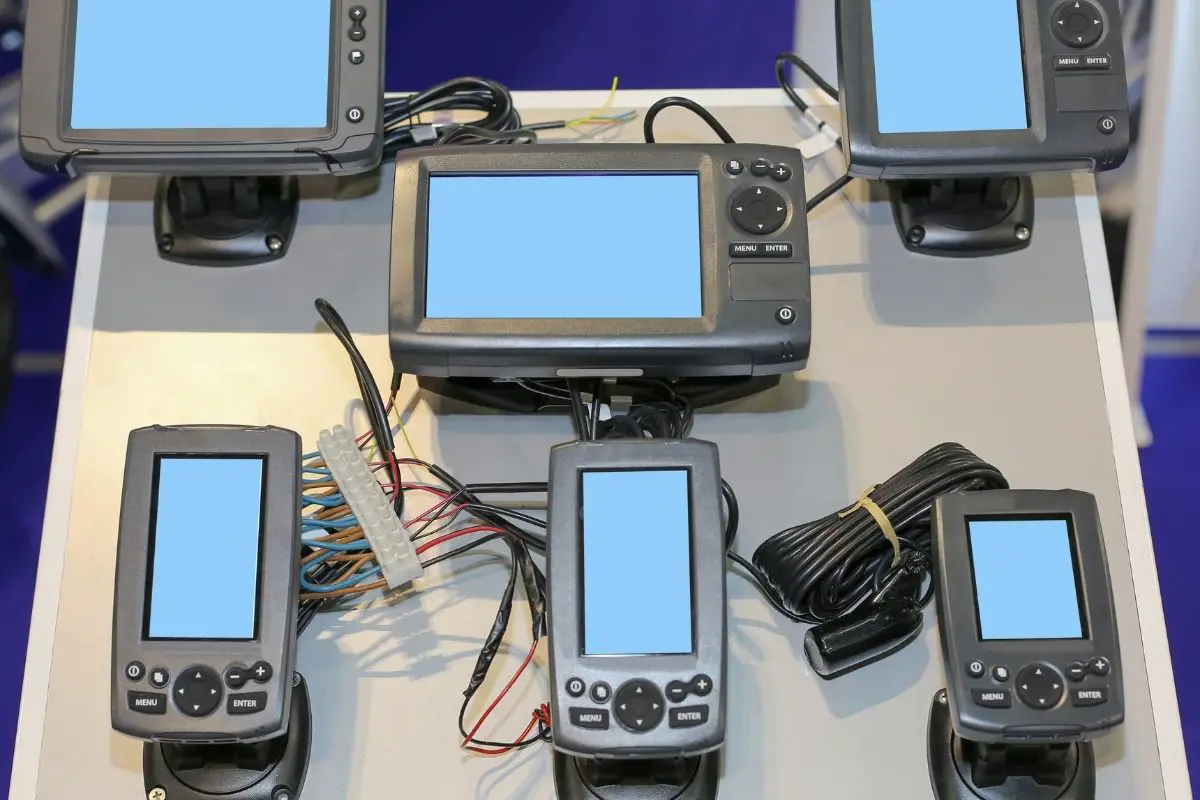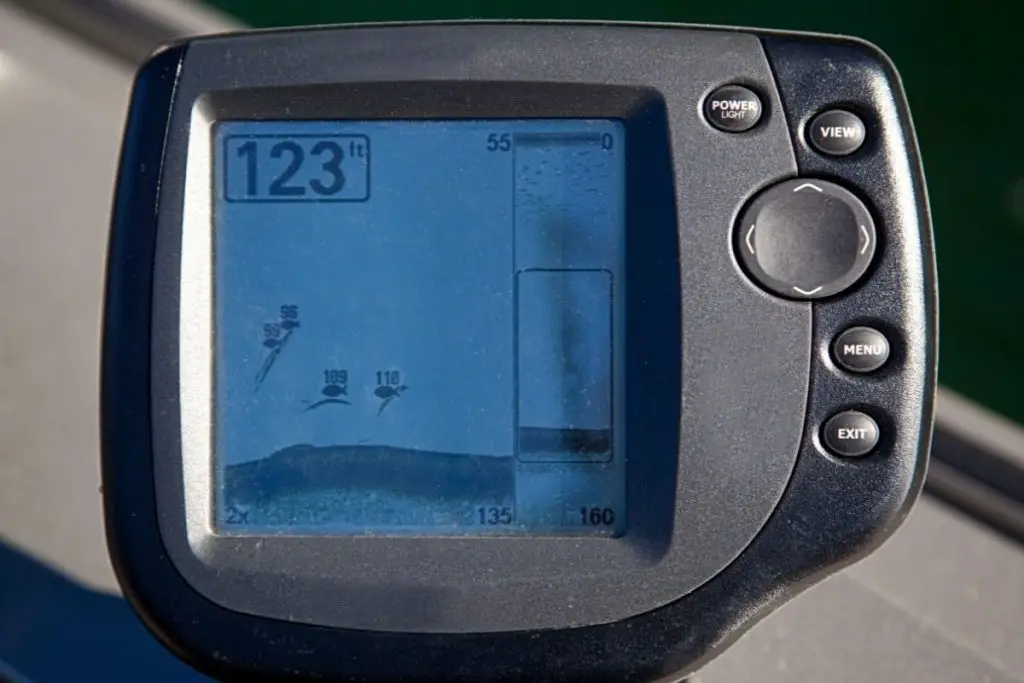Fishing can involve a lot of guesswork – after all, you can’t see underwater with your naked eye! Simply cast your line, hope that you’re in a highly-populated area of the water, and wait for a bite.
Well, that’s what fishing used to be like. But with the magical invention of fish finders, we can now make sure that we’re always fishing in the right place.
Fishfinders use sonar as a great way to detect fish underwater. When fishing from shore or boat, a fish finder is essential equipment so that you can maximize your time and catch as many fish as possible.
The Key Ingredient Of A Fish Finder
A fish finder, otherwise known as sonar, sends sound waves pulsing down through the water. They keep traveling until they hit something, which might be a fish. The fish finder detects that the sound wave has stopped traveling and notifies you on a screen.
The sonar then measures how far down the object was by measuring how long the sound wave took to travel down, hit the object, then travel back up again.
This information allows you to know how far the object was below the surface. You can then determine whether it was a fish, vegetation, or the bottom of the water.
Another thing that the fish finder will measure is how hard the sound wave pulses on its return. The harder the returning pulse is, the harder the object was. This helps you distinguish between fish and vegetation, as the latter will be much softer than the former.
Fish finders send out continuous sound waves one after another. This is so that your fish finder will keep monitoring underwater so that you can see exactly what is happening.
Sound waves travel at around one mile a second underwater, so multiple sound waves can be pulsed out of the sonar every second.
Fish Finders how do Work
There are two parts to your fish finder – the display and the transducer. The display shows you where the fish are located and their size.
It also tells you if there is any danger nearby such as rocks or other obstacles. The transducers are responsible for sending out the sound waves and receiving them when they come back.
Your fish finder uses a transducer that looks like an antenna to send out the sound waves. It contains piezoelectric crystals that send the pulses down into the water by vibrating at the perfect frequency.
When the sound waves reach the bottom of the water, they bounce off objects and reflect back towards the transducer. If the transducer receives these reflected sound waves, it will send out more sound waves to continue the process.
As we mentioned before, these returning signals can be interpreted by the fish finder to give you different information.
Different features of the underwater scene can be determined by sending down signals of different frequencies. So, many fish finders will send down multiple sound wave pulses at the same time with different frequencies.
Doing this allows you to get a clearer image of what is happening underneath your boat quicker, as you’re not waiting for the signals to come back one at a time. Fish finders that send multiple different signals out at different frequencies at the same time are called CHIRP sonars.
Different Types Of Fish Finders
There are three different types of fish finders that we’re going to be looking at in a little more detail now: 2D sonars, down imaging sonars, and side imaging sonars.

Tyger Leader is reader-supported and may earn a commission when you book or purchase using our links. Learn more about our affiliate disclaimer here.
2D Sonars
These sonars are traditional models and they come with a rounded transducer that emits signals that get wider as they travel further into the water. This allows them to gather information from a wider area under your boat.
This type of sonar is good for scanning a large area for game fish, and these show up on the screen as arches. However, the objects are often fuzzy on 2D sonars which makes them harder to distinguish between.
For example, you might see a large dot on your sonar and think nothing more of it, but it actually was a large school of fish that you could have capitalized on.
With that being said, CHIRP sonars are a type of 2D sonar and they have very much stepped up their game in this regard.
Down Imaging Sonars
This type of sonar is newer than the 2D alternative and uses a thinner transducer that is a rectangular shape. This sends a more narrow signal into the water that allows the sonar to pick up on much higher quality information.
Down imaging sonars are great for finding objects and telling you exactly what they are. For example, this kind of sonar can show you gamefish resting on the bottom of the water, which a 2D sonar can’t do. It can also show you individual fish in schools of fish.
There is one drawback to these types of sonars, and that is that the narrow signal only captures a small portion of underwater at a time, so you might be missing something important under the water that is just outside of your view.
Side Imaging Sonars
Side imaging sonars are good for getting a view of a large area underwater on both sides of your boat. They’ll show you a number of different structures such as vegetation, sunken trees, and rocks. However, these sonars are not the best for showing smaller objects such as fish.
You might be thinking what the point of these fish finders is if not to find fish. These sonars are best for showing you an overall image of under the water, not just for fishing purposes.
Summary
Fish finders work by using sound waves to determine the depth of objects underneath the water around your boat. The way that they do this is by sending out a series of sound wave pulses at different frequencies.
The strength of the returning wave will let you know how large the object is, while the time it takes for the sound wave to return lets you know how far the object is underwater.



